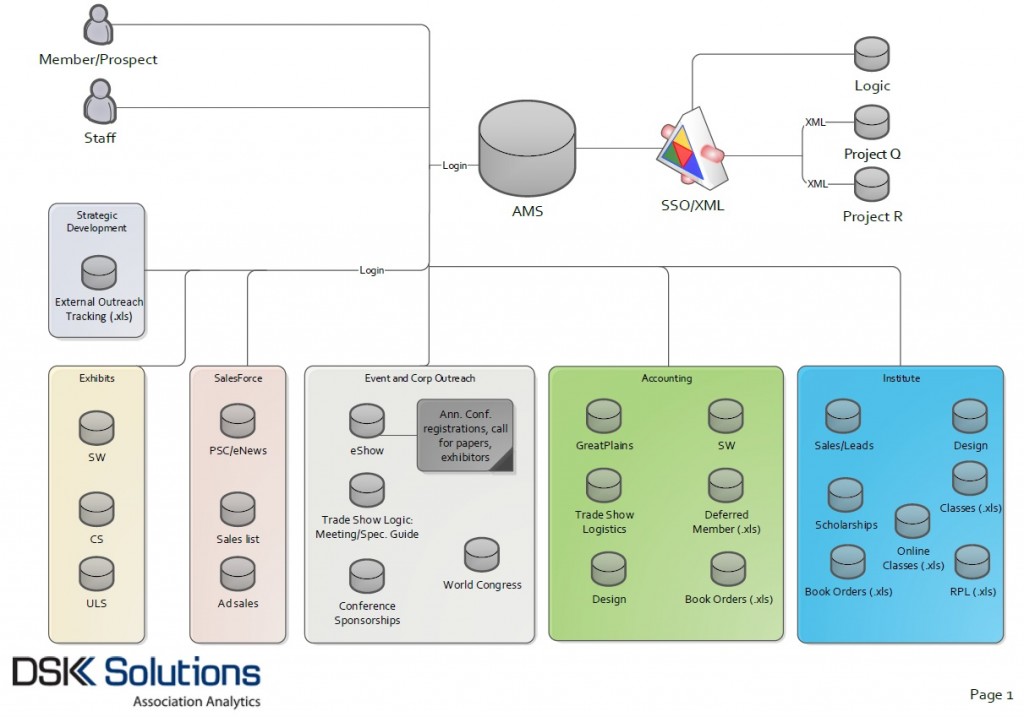Locating Your Data
Do you know where all your data is? Associations, like all businesses, have so many working parts that it can be difficult and time consuming to keep information both centralized and easily assessable. However, in the age of data analytics, it has become even more critical to know the location and importance of your data in order to use it to fulfill your mission.
After many years of working with clients, DSK Solutions has found that the first step to a successful BI strategy is to scope the project: outline what you already know and document your business questions.
Steps to Take
Begin by identifying your data sources:
- Data source name
- Location and server name
- Database/data mart/warehouse name
- Application name
- Format
- Size
- Update frequency
- Primary tables/cubes/lists
- Approximate number of rows/columns for primary tables
- Internal/external keys for primary tables, dimensions for primary cubes
- Names of external systems that provide data to data source: Frequency of external system input and method of integration
- Names of external systems that this data source provides data to: Frequency of system output to external systems and method of integration
Then, identify the more qualitative features and value:
- Purpose
- Importance
- Data sensitivity, security/compliance requirements
- Known data quality issues/current cleansing process (e.g., duplicates, missing information, etc.)
- Data owner or name of person/dept. responsible for data source
- Reports/exports produced from this data, departments using these outputs
Finally, connect your data with your important business questions:
- What role can data play in achieving your mission?
- How can you map your data to your strategic plan?
- What metrics reflect your most important data?
- How can you best collect and integrate your data to get a 360 degree view of your members and prospects?
We’ve helped many associations and nonprofits create a data inventory like the one depicted visually below. One of the first steps in the process of analyzing data starts by creating a data inventory.




